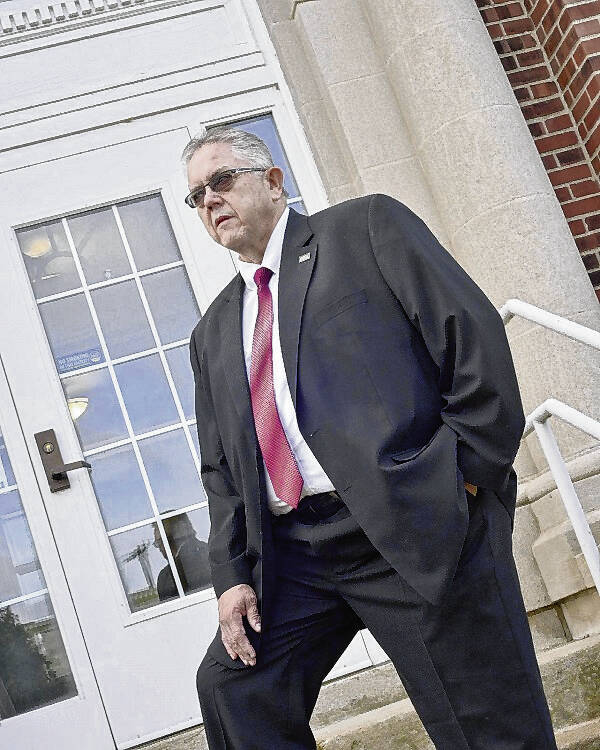More trails, improved pedestrian access and in-water recreational opportunities for the Columbus riverfront are among priorities that came out of a public survey that generated 600 responses.
The survey, commissioned by a firm leading the city’s riverfront project, was conducted to learn what the public wants to see along the East Fork White River between the Second Street and Third Street bridges.
The information will be used to help Hitchcock Design Group of Naperville, Illinois, develop several conceptual designs for the riverfront that will be unveiled later this year, said Heather Pope, redevelopment director for the city.
Survey results support the city’s assessments that the riverfront needs improvement, she said.
[sc:text-divider text-divider-title=”Story continues below gallery” ]
Pope said the city is focusing on the riverfront as it looks to improve the quality of life for Columbus residents — with a bonus impact of drawing more visitors to the city, she said.
“An improved riverfront is an economic driver to our community,” Pope said. “It’s one of the first impressions of Columbus. We’re very proud of our city and we want it to look the best we can.”
Several recommendations already have been made by Hitchcock:
Adding sidewalks that would extend the People Trail along the river with connections north and south of the bridges, and river access from the top of the banks.
Modifying the low-head dam to allow in-stream watercraft.
Creating a whitewater course targeting individuals of different experience levels.
Providing a river-themed children’s play space.
Pope said no decisions have yet been made on the recommendations from Hitchcock.
Besides the survey, the firm conducted an open house in April at Columbus City Hall to allow the public to weigh in with their own ideas for the riverfront.
Interviews also were conducted with leaders from organizations such as the Bartholomew Consolidated School Corp., Columbus Area Visitors Center and major employers such as Cummins and Toyota, said Randy Royer, the city’s riverfront project manager with Hitchcock Design Group.
Suggestions provided by individuals were similar to results from the survey, Royer said.
Columbus resident LuAnn Davis said she rides her bike with her husband Mark five days a week if the weather is nice. She said she supports the People Trail being extended along the riverfront.
“I’m in favor of any development in the area,” she said. “We’d like to see more bikes and trails.”
Columbus resident Pam Zeller walks on the People Trail three to four days a week and said she supports improvements being made in the area. Such changes would be beneficial for residents, but for visitors as well, she said.
“It’d be good for the families out of town that come to Columbus,” Zeller said.
She was joined by Shari Donnelly on her walk, and both individuals said anything family-friendly would be a plus.
Ripple effect of improved riverfront
“It’s a great opportunity for us as a community to take a look at the riverfront as an asset,” said Karen Niverson, executive director of the Columbus Area Visitors Center. “It serves as a catalyst for additional private development.”
Niverson said the improvements would have a ripple effect as visitors spend more time and money in the community.
“We have the attractions, but we need to build additional amenities,” she said. “I think having the (Upland Columbus) Pump House on the river is a great anchor for all of this.”
Ryan Forsness, general manager of the Upland Brewing Co., operator of the brew pub, said he is excited about the project and believes it could increase business for the brewery, which plans to celebrate its one-year anniversary in July. The business is located next to the riverfront and is part of the area targeted for improvement.
“When the weather is nice, it would be a huge draw,” Forsness said. “I think there’s a great need for it. It’d be a good use of natural space we already have.”
Columbus’ riverfront also is an important asset at the downtown’s doorstep, said Cindy Frey, president of the Columbus Area Chamber of Commerce.
Frey also took notice of another city’s riverfront during her visit to a national CEO event last month in Greenville, S.C.
Greenville took steps to make improvements with recreational areas that made its downtown more attractive for private developers and investors, Frey said.
A fresh look to Columbus’ riverfront could also help companies attract workers with needed technical skills, Frey said.
“We want to be that place people live and work, and that’s never been more critical than now,” Frey said. “The more people to the waterfront, the better we’ll be.”
The proposed improvements also could give the public opportunities to become more active as well, Frey said. In doing so, riverfront improvements will have far-reaching impact, Frey said.
“It does require an investment, but it comes down to a quality of life we’ve come to appreciate here in Columbus,” she said.
Riverfront costs
Pope said the city projects to spend $500,000 this year and an additional $1 million in 2018 toward the riverfront project. That could change, however, depending on work tied to the railroad project to deal with an expected increase in trains starting next year.
Pope said she doesn’t anticipate the city spending all of the riverfront funds for this year since surveying work on the river has been behind schedule. Money for the riverfront project is coming from tax increment financing dollars through the city’s Central TIF District.
Here’s how some of the money has been spent so far.
CORE Planning, of Indianapolis, was selected in May 2016 by the Columbus Redevelopment Commission as a consultant to guide the city in how to obtain a workable design plan for the area. It was hired for a maximum of $90,000 for 50 weeks of work to assess the riverfront land in downtown Columbus.
In December, the Columbus Redevelopment Commission approved a resolution to select Hitchcock Design Group for the riverfront redevelopment project at a cost not to exceed $299,000.
In August, the Columbus Redevelopment Commission approved up to $53,000 for additional work on the Riverwalk project — $48,500 for a geomorphic study into the implications of removing the low-head dam on the East Fork White River, and up to $5,000 for the research, application and administration of a grant to remove the dam.
The city has no other money currently earmarked for the project except TIF dollars, but Pope said she hopes a public/private partnership can be formed at a later date.
“We want to get a design put together and go from there,” Pope said.
Columbus also is waiting to hear back from two agencies on whether it will receive grant funding to modify or remove its low-head dam near the Pump House, including a $200,000 matching grant from the U.S. Fish and Wildlife Service. It is also seeking a separate grant totaling $100,000 to $150,000 from the Indiana Department of Natural Resources for lake and river enhancement that could be used to modify or remove the dam.
The city expects to hear later this year whether it is awarded grants from those federal or state agencies, Pope said.
The Silver Jackets, a group made up of state and federal agencies, is expected to present information Monday to the Columbus Redevelopment Commission on whether water levels would be affected by the removal of the low-head dam.
Future work ahead
Accessibility to the riverfront remains an important focus as officials continue their work. Pope said the city wants to make the area available to all individuals, whether they want to enter the water for recreational opportunities or just want to be next to it.
Hitchcock plans to create a universal design with individuals of all physical abilities in mind, Royer said.
“Anyone who wants to come down and enjoy the river can do that,” he said.
Pope said the city wants to give the public an opportunity to experience the river in the way they want.
Three conceptual designs of the riverfront area are expected to be presented during an open house in late August or early September, Pope said. The forum will give the public a chance to provide more feedback on Hitchcock’s designs, which could be changed, Royer said.
A final riverfront plan would be presented this fall, Pope said.
“The river has a lot of potential,” she said.
[sc:pullout-title pullout-title=”More information” ][sc:pullout-text-begin]
For more information on the city’s riverfront project, visit www.columbusriverfront.org.
[sc:pullout-text-end][sc:pullout-title pullout-title=”What’s next” ][sc:pullout-text-begin]
Three conceptual designs of the riverfront are expected to be presented in late August or early September during a public open house.
[sc:pullout-text-end]







